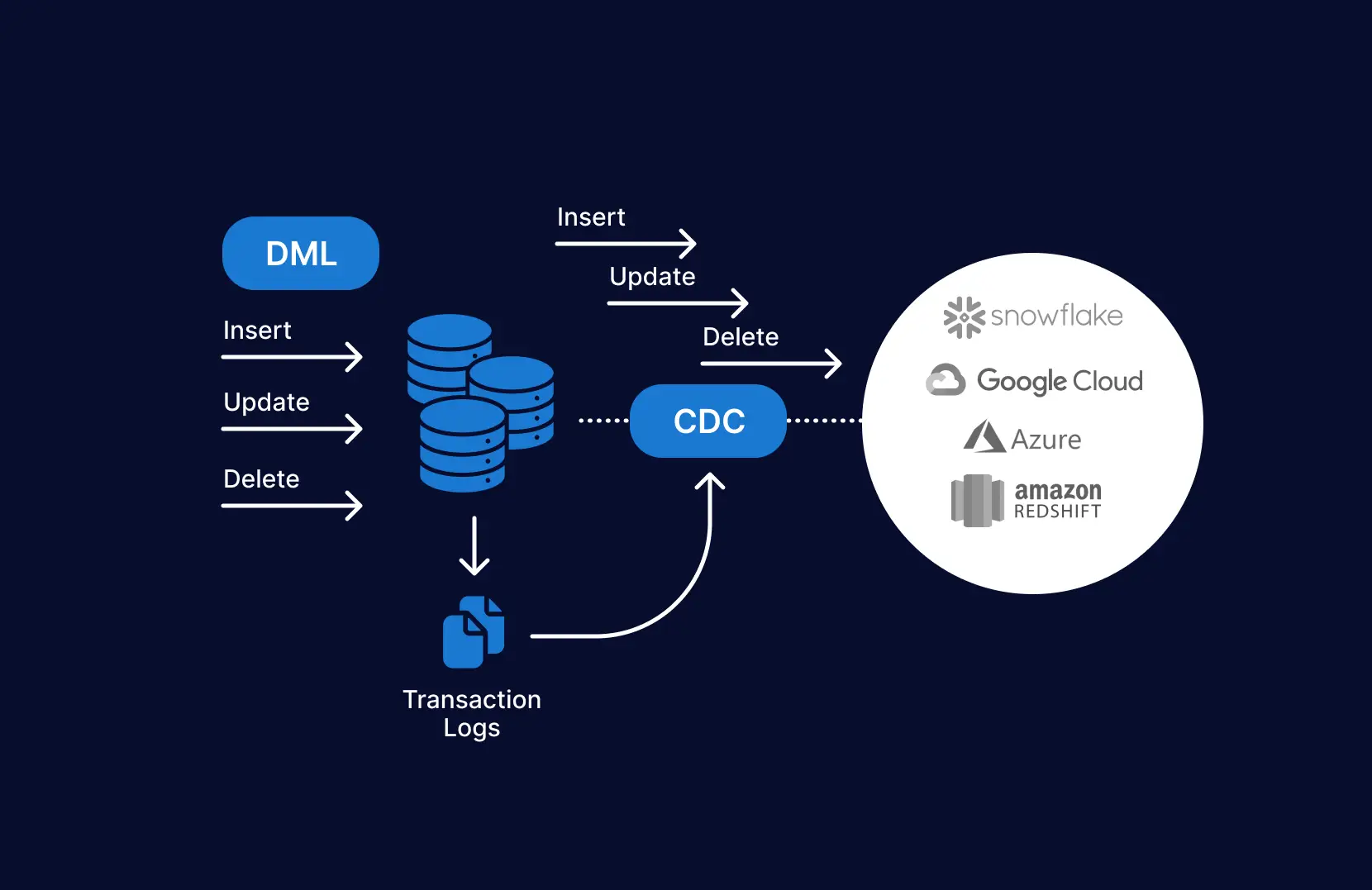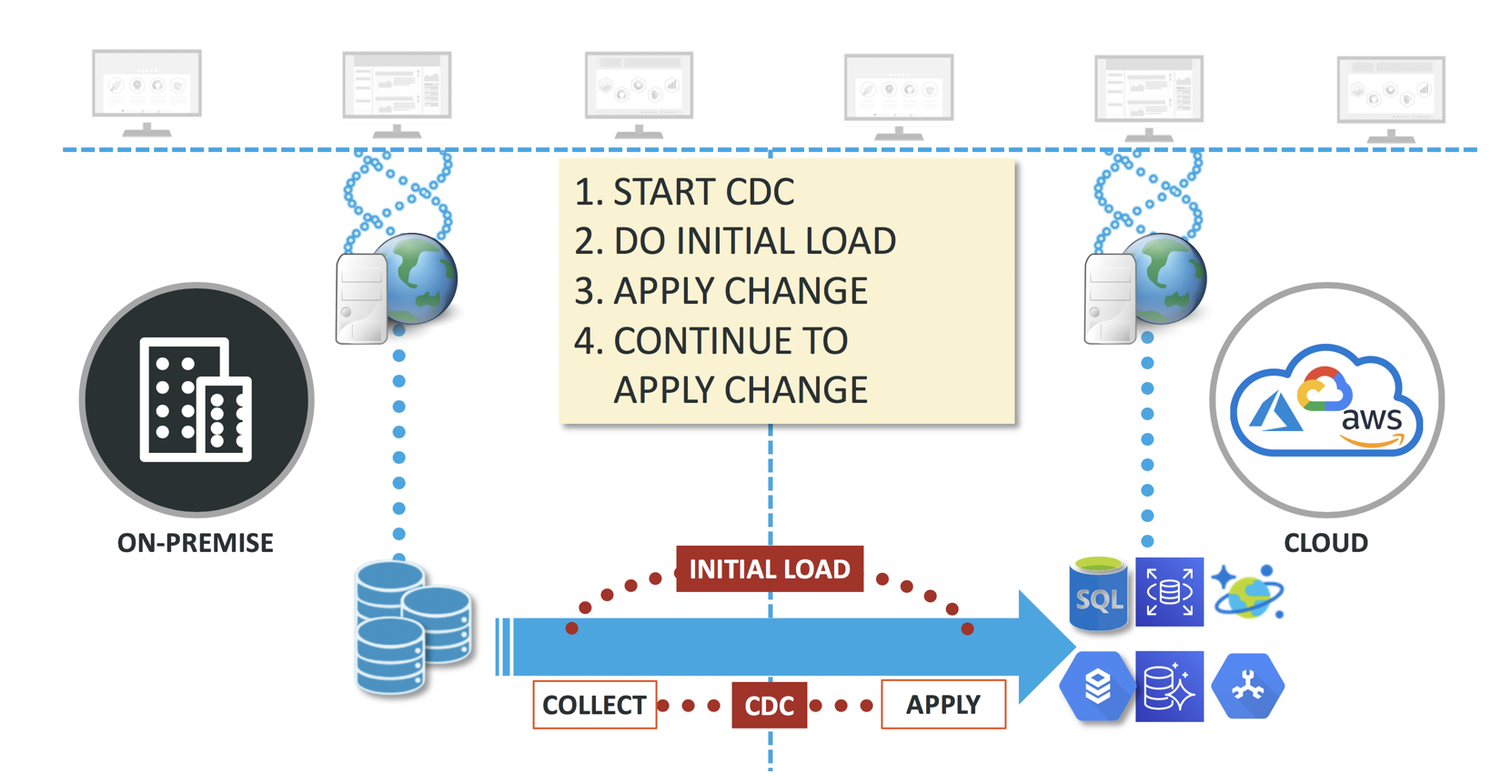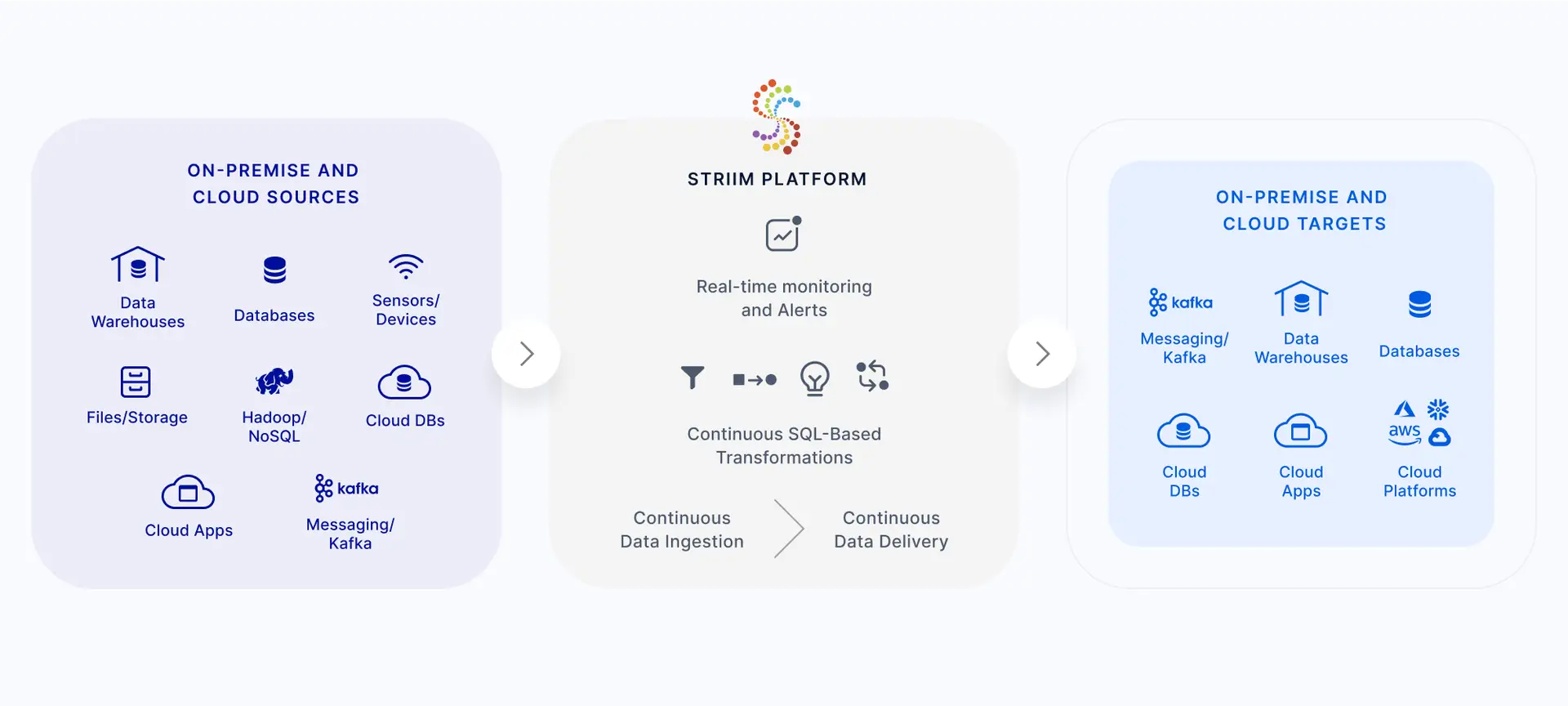Change Data Capture allows you to identify and track changes in your databases. By continuously intercepting database updates, inserts, and deletes, Change Data Capture provides a continuous stream of change data. This stream of change data can be used to replicate or migrate data to various data targets.
While it is possible to hand-code CDC processes, Change Data Capture tools help to automate and simplify the CDC capture process. We’re going to cover various popular use cases for CDC tools, and share a few pointers to help you select a tool that best suits your needs.
Use Cases for CDC Tools
- (Easily) Parse the Transaction Log
- Complete Integration Jobs with Less Effort
- Enjoy Pre-Built Support for a Variety of Data Sources and Targets
- Leverage Data Replication for Query Offloading and Operational Analytics
- Build a Data Lake
- Simplify Database Replication and Migration
1. Easily Parse the Transaction Log
Databases use transaction logs for storing database events so the database can recover after a crash. Usually, a database transaction log is stored in an extremely complex and ever-changing internal format. That means tasks like reverse engineering and maintenance can be considerably difficult. APIs for databases are often riddled with bugs, which means a lot of work to build a stable solution for parsing transaction logs.
For instance, the PostgreSQL CDC comes with a feature known as Logical Decoding. It entails a replication slot – a database-based object that references a particular position in the transaction logs, and an API – for parsing the transaction log from a fixed slot position. Although this feature works in some cases, it’s prone to the following bugs:
- Sending duplicate data under load.
- Inability to reveal changes in schema.
- Unable to give a solution for moving the replication slot backward.
CDC tools like Striim have developed innovative solutions to resolve these forms of restrictions that exist in PostgreSQL and many other APIs. This way, you are ensured faultless and efficient transaction log processing.

2. Complete Integration Jobs with Less Effort
Hand coding the CDC infrastructure is not simple. You’ll have to tackle a number of challenges: manage code by yourself (which increases complexity), find developers for custom coding, and face higher maintenance costs due to additional hiring.
To address these difficulties, you need a data pipeline platform, and that’s where a CDC tool can simplify your work.
3. Enjoy Pre-Built Support For a Broad Array of Data Sources (and Targets)
One of the primary challenges while using a CDC tool is ensuring that your CDC tool is compatible with your organization’s data sources. First and foremost, you need to ensure compatibility with your source database.
To future-proof your investment, your CDC tool should be an end-to-end data integration solution, that offers support for a variety of data sources and targets including:
- Messaging systems
- IoT devices
- Cloud and on-premise relational and noSQL databases (Oracle, SQL Server, MySQL, MongoDB, and more), data warehouses, and data lakes
- Files and logs
- Network protocols
4. Leverage Data Replication for Query Offloading and Operational Analytics
Operational processes in continuously available environments depend on 24/7 data services. These include operational reporting, marketing contact management, and fraud analytics.
When real-time analytics are implemented, companies are looking to reduce the impact of reports that run against the production system. Additionally, they want a real-time replication mechanism to keep their production systems and reporting system synchronized seamlessly.
A CDC tool helps to limit the impact of reporting via log-based CDC technology and real-time database replication. It also mitigates the latency issue by scaling out both on-prem and in the cloud.
5. Build a Data Lake
Companies try to consolidate data in a data storage environment without breaking the bank. For that, they can use a data lake that helps them with the following capabilities:
- Store data in its original format
- Store data for long periods
- Collect data continuously and quickly from their source systems
A CDC tool should support constant data movement into file-based data lakes, while at the same time, minimize latency.
6. Simplify Database Migration and Replication
Due to legacy systems, businesses face several challenges during data migration. These challenges emerge while migrating data in the application tier and database and during the maintenance of uninterrupted user access to applications when the migration is being processed.

For truly zero downtime migrations, CDC tools need to be able to load data from the source database and continuously capture any changes that happen during the loading process. As soon as the initial load is complete, the changes must be applied to the target environment to maintain the legacy and cloud database consistency. And all this must be accomplished without losing or duplicating data (i.e. zero data loss).
Try Striim for Change Data Capture

Are you looking for a single CDC solution that can help you with all the use-cases mentioned above? Striim is a complete, end-to-end, in-memory platform for collecting, filtering, transforming, enriching, aggregating, analyzing, and delivering big data in real-time.
Striim was founded by the GoldenGate software executive and technical team, who have decades of experience tackling mission-critical enterprise workloads.
Striim supports high-performance log based CDC for a variety of databases including Oracle database, SQL Server, MySQL, HPNonStop, and MongoDB; and replicates data in real-time to target systems. Even better, Striim also supports non-database sources including files, logs, messaging systems (Kafka), IoT devices, data warehouses, and more.
Unlike other single-node CDC tools, Striim can scale out to process large volumes of data with sub-second latencies. Striim also offers scalable in-memory in-flight transformations and analysis. In addition, Striim ensures exactly-once data (E1P) processing and supports service level agreements (SLAs) for data delivery and latency.
Try Striim for free or request a demo to see for yourself how a change data capture tool can add value to your operations.






















